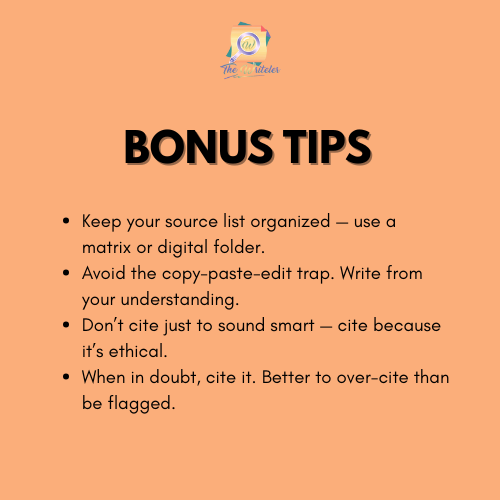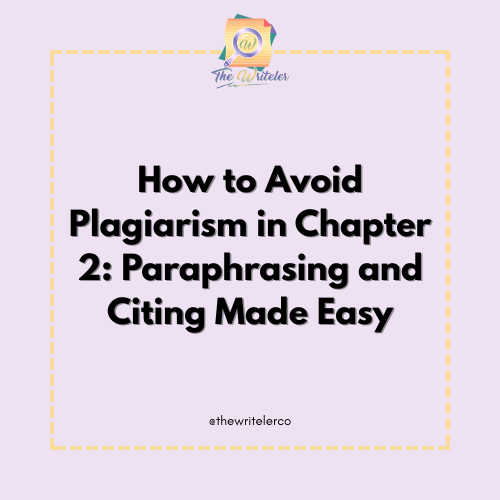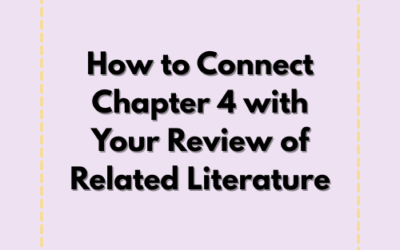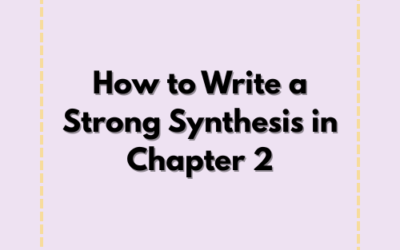Let’s be honest — Chapter 2 (Review of Related Literature) is one of the trickiest parts of writing a thesis. Not because it’s the most technical, but because it’s where plagiarism often happens… unintentionally.
You’re reading study after study. You want to include their insights. But suddenly, you’re not sure if you’ve paraphrased enough. Or if you even need a citation for something that “feels obvious.”
This guide is here to help.
Whether you’re a student, a busy professional, or working on your master’s or Ph.D., here’s how to avoid plagiarism in Chapter 2 — with easy paraphrasing tips and citation hacks that will save your work and your credibility.
What Counts as Plagiarism in Chapter 2?
Plagiarism isn’t just copy-pasting entire paragraphs. It can sneak in even if you think you’re being careful. Here’s what counts:
🚫 Copy-pasting text without quotation marks or a citation
🚫 Rewriting only a few words but keeping the original sentence structure
🚫 Forgetting to cite even when you paraphrased
🚫 Using someone else’s idea without giving credit
Even if you change the words, if the idea isn’t yours — you must cite it.
Why Paraphrasing Matters
Paraphrasing is the skill of restating someone else’s idea in your own words. It’s a critical part of academic writing because it shows that you:
- Understand the source
- Can explain it in your voice
- Know how it connects to your study
Paraphrasing ≠ copying and replacing words. It means reorganizing the thought, changing the structure, and still crediting the source.
Use direct quotes only if the phrasing is powerful or hard to reword. Otherwise, paraphrase — it keeps your Chapter 2 flowing better.
How to Paraphrase Effectively (Step-by-Step)
✅ 1. Read and Understand the Text First
If you don’t understand the source, don’t try to paraphrase it. You’ll either copy it too closely or misrepresent it.
✅ 2. Cover the Text and Rephrase from Memory
Try explaining the idea as if you’re talking to a classmate. This helps detach you from the original sentence structure.
✅ 3. Change the Sentence Structure
Don’t just change words — flip the order, break up long sentences, combine short ones, or use different grammar structures.
✅ 4. Compare with the Original
After writing, look back and check:
- Is the structure different?
- Is the phrasing unique?
- Does it still mean the same thing?
✅ 5. Still Add a Citation
Even if it’s 100% in your own words — the idea isn’t. So cite it. Always.
Example: Good vs. Bad Paraphrasing
Original:
“Mindfulness has been shown to improve cognitive function, emotional regulation, and academic performance in adolescent learners.” (Santos, 2022)
❌ Poor Paraphrasing:
Mindfulness improves thinking, emotions, and how students perform academically. (Santos, 2022)
Too close. Same structure, only a few synonyms.
✅ Proper Paraphrasing:
Santos (2022) found that adolescents who practice mindfulness tend to show better focus, emotional balance, and higher grades — indicating its value in the learning environment.
Different sentence structure, voice, and still cites the source.
How to Cite Properly in Chapter 2
Use in-text citations every time you:
- Use someone’s idea
- Paraphrase or summarize
- Quote directly
📘 APA Format Example:
- Paraphrased: Mindfulness can positively affect student performance when practiced regularly (Santos, 2022).
- Quoted: “Mindfulness has been shown to improve cognitive function” (Santos, 2022, p. 45).
You can also use tools to generate citations easily:
- Google Docs → Tools → Citations
- Zotero or Mendeley for reference management
- Citation generators like Scribbr, BibGuru, or CiteThisForMe
Free Tools to Check for Plagiarism
Before submitting your Chapter 2, run it through a plagiarism checker. Some options:
- Grammarly Premium
- Quillbot’s Plagiarism Checker
- Plagscan
- SmallSEOTools (free, basic)
- Turnitin (if your school provides access)
💡 Tip: Even if your similarity score is low, check where the matches are and make sure all ideas are cited.

📣 Need Help Writing Chapter 2 Without Worrying About Plagiarism?
The Writeler Co. is here to support students and professionals who are juggling research with work, life, and business. Whether you’re writing a thesis, capstone, or dissertation for your master’s or Ph.D., we help you efficiently navigate the research journey — from brainstorming to proofreading.
📩 Message us today to get started.
📚 Let’s turn your research idea into a powerful paper.





0 Comments